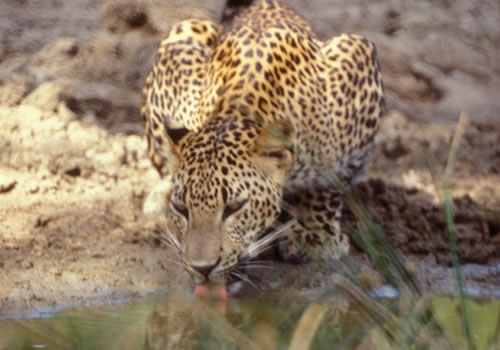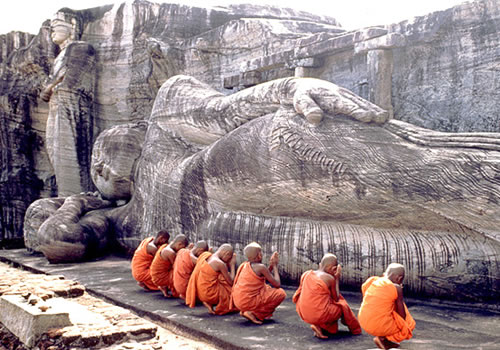Cars


Jeeps
Bus
Whale and dolphin watching in Mirissa is one of the most exciting water activities you can do in Sri Lanka during your holiday. Mirissa is the best place to start your whale and dolphin watching tour in Sri Lanka. In warm Indian ocean you can see Blue whales, Sperm whales, Fin whales, sometimes Killer whales, and Common dolphins, Bottlenose dolphins, Spinner dolphins, Risso's dolphins and Striped dolphins. Sometimes you can see turtles and various fish species, for example Bluefin tuna and flying fish.
One of Asia's major archaeological sites, Sigiriya presents a unique concentration of fifth-century urban planning, architecture, gardening, engineering, hydraulic technology and art. Centred on a massive rock rising 200 meters above the surrounding plain, Sigiriya s location is one of considerable natural beauty and historical interest. An area of ancient settlement lying between the historic capitals of Anuradhapura and Polonnaruva, the Sigiriya plain still retains much of its forest cover, and many of its present village settlements and man-made village reservoirs date back to the first millennium B.C. In its present form, Sigiriya itself is essentially a walled-and-moated royal capital of the fifth century A.D., with a palace complex on top of the rock, elaborate pleasure gardens, extensive moats and ramparts, and the well-known paintings on the western face of the rock. The history of Sigiriya, however, extends from prehistoric times to the seventeenth and eighteenth centuries. The earliest evidence of human habitation is in the Aligala rock-shelter which lies to the east of the Sigiriya rock. This is a major prehistoric site of the mesolithic period, with an occupational sequence starting nearly five thousand years ago and extending up to early historic times. The historical period at Sigiriya begins about the third century B.C., with the establishment of a Buddhist monastic settlement on the rock-strewn western and northern slopes of the hill around the rock. As in other similar sites of this period, partially man¬made rock-shelters or 'caves', with deeply-incised protective grooves or drip¬ledges, were created in the bases of several large boulders. There are altogether 30 such shelters, many of them dated by the donatory inscriptions carved in the rock face near their drip-ledges to a period between the third century B.C., and the first century A.D. The inscriptions record the granting of these caves to the Buddhist monastic order to be used as residences.
Kandy, the last royal capital of Sri Lanka is a major tourist destination. ( 115kM from Colombo at 465 meters above sea level). Famous for the Temple of the Tooth and many other temples the city could be called the cultural capital of the island. Kandy Perahera, the pageant of the temple of tooth where Buddha's tooth is kept is held either in July or August each year to parade the golden caskets is a must see itenary if one is visiting Sri Lanka during these months. The final night procession is the most spectacular event of the country. More than 50 elephants parade the city accompanied by the drummers, dancers and chieftains. The city established in the 15th century was the last royal capital where 2500 years of royal rule ended. This bustling market town is rich in cultural diversity has plenty of iteneries to offer to the tourists from songs dances and handy crafts to ancient temples and adventure activities. Kandy is a good transit point to the cultural triangle to the north or hill country to the south. The city is also a good source of souvenirs or to experience many cultural performances at it's various hotels in the city.
Polonnaruwa Sri Lanka's splendid medieval capital was established as the first city of the land in the 11th Century, A.D. It replaced Anuradhapura, plundered made desolate, and laid hopelessly bare to the invading armies from South India. Three Kings dominate the annals of the city and the period. The city reached a dazzling but pitifully brief zenith in the 12th century and though ravaged by invasion in the centuries following, much evidence remains of the old grandeur and glory. The ruins of the ancient city stand on the east shore of a large artificial lake, the Topa Wewa Lake, or Parakrama Samudra (the Sea of Parakrama), created by King Parakramabahu I (1153-86), whose reign was Polonnaruwa's golden age. Within a rectangle of city walls stand palace buildings and clusters of dozens of dagobas, temples and various other religious buildings. A scattering of other historic buildings can be found to the north of the main complex, outside the city walls and close to the main road to Habarana and Dambulla. To see many of the relics excavated from the site such as the stone lion which once guarded the palace of King Nissanka Malla, or the fine Hindu bronzes unearthed from the ruins of the Siva Devale Temple - you may have to visit the National Museum in Colombo where they are kept. However, with the opening of the new Polonnaruwa Visitor Information Centre and its museum in 1998/9 some of the key exhibits were scheduled to return to the place where they were discovered.
Anuradhapura was first settled by Anuradha, a follower of Prince Vijaya the founder of the Sinhala race. Later, it was made the Capital by King Pandukabhaya about 380 B.C.According to the Mahavamsa, the epic of Sinhala History, King Pandukabhaya's city was a model of planning. Precincts were set aside for huntsmen, for scavengers and for heretics as well as for foreigners. There were hostels and hospitals, at least one Jain chapel, and cemeteries for high and low castes. A water supply was assured by the construction of tanks, artificial reservoirs, of which the one called after himself exists to this day under the altered name of Baswakkulam. It was in the reign of King Devanampiya Tissa (250 - 210 B.C.) that the Arahat Mahinda, son of the great Buddhist Emperor Asoka, led a group of missionaries from North India to Sri Lanka. With his followers he settled in a hermitage of caves on the hill of Mihintale - whose name derives from Mahinda's own. The new religion swept over the land in a wave. The King himself gave for a great monastery in the very heart of the city his own Royal Park - the beautiful Mahamegha Gardens. The Buddhist principality had had but a century to flourish when it was temporarily overthrown by an invader from the Chola Kingdom of South India. The religion, however, received no set-back. At this time far away on the southeast coast, was growing up the prince who was to become the paladin of Sinhala nationalism: Dutugamunu (161 - 137 B.C) For all his martial prowess, King Duttha Gamini must have been a man of singular sensibility. He built MIRISAVETI DAGOBA, and the mighty Brazen Palace, nine stories high he presented to Mahasanga (order of monks). But, the RUWANVELI DAGOBA, his most magnificent gift he did not live to see actually completed. Two more, at least, of the Anuradhapura Kings must be mentioned - if only because some of the greater monuments are indisputably attributable to them. The earlier of these was Vattagamani Abhaya (Valagamba) (103 & 89-77 B.C.) in the first year of whose reign Chola invaders again appeared and drove him temporarily into hiding. For fourteen years, while five Tamil Kings occupied his throne, he wandered often sheltering in jungle caves. It is recorded that as in his flight he passed an ancient Jain hermitage, an ascetic, Gin called and taunted him. "The great black lion is fleeing!" Throughout his exile the gibe rankled. Winning the Kingdom back at last, he razed Giri's hermitage to the ground building, there the ABHAYAGIRI Monastery. The name is a wry cant on his own name and the tactless hermit's as well as (meaning mountain of fearlessness) a disclaimer of his cowardice! Next came the heretic king Mahasena (274 - 301 A.D) who built the Sri Lanka's largest Dagoba JETAWANARAMA (World Heritage Site) much complicated irrigation system and 16 vast reservoirs (tank) like MINNERIYA, even today which irrigate thousands of acres of paddy land. Anuradhapura was to continue for six hundred years longer the national capital. But as the protecting wilderness round it diminished with prosperity and internecine struggles for the royal succession grew, it became more and more vulnerable to the pressures of South Indian expansion; and the city was finally abandoned and the Capital withdrawn to more secluded fastnesses. But the monuments of its heyday survive, surrounded by such beauties as become the past: the solemn umbrage of trees, the silence of cold stone, and the serenity of the sheltering sky.

YALA is among the oldest and best known of Sri Lanka 's National Parks. Yala covers about 1297 sqkm or 129,700 ha. And it is the largest agglomeration of protected areas in the country. The multifarious ecosystems ranging from Moist Monsoon Forest , to Dry Monsoon Forests, Semi Deciduous Forests, Thorn forests, Grasslands, fresh water & marine wetlands, and sandy beaches, possesses a large number of important plant species and smaller animals. Kumbukkan Oya in the North East and Menik Ganga and tributaries on the West, flow through the Park providing a source of water to the animals even during the driest months of the year. Yala plays a very significant role in conservation of a large number of flora and fauna in the country. Historical and religious sites such as Kataragama, Sithulpahuwa and Magul Maha Vihara and many archaeologically important places add additional significance to the area. Yala West (Ruhuna) National Park is well recognized as one of the best parks in the world to observe and photograph leopards. The park covers an area of over 100,000 hectares and is divided into five blocks.













